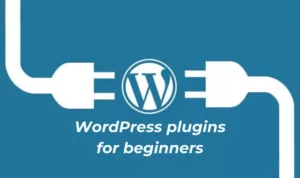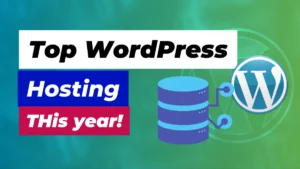In today’s competitive e-commerce landscape, integrating your WooCommerce store with Google Shopping is essential. This powerful combination can significantly boost your store’s visibility and drive sales growth. With Google Shopping, your product listings are showcased prominently in search results, reaching a vast audience of potential customers. By harnessing the potential of WooCommerce Google Shopping integration, you can unlock new opportunities for your online store’s success.
Subheading 1.1: Understanding Google Shopping and its Impact on E-commerce Success
Google Shopping is a powerful platform that revolutionizes the way products are discovered and purchased online. It allows businesses to showcase their products directly within Google’s search results, providing users with visually appealing and relevant product listings. This increased visibility and accessibility makes Google Shopping a game-changer for e-commerce success. With millions of potential customers actively searching for products on Google, integrating WooCommerce with Google Shopping opens up new avenues to reach and engage with your target audience. By capitalizing on this platform, you can enhance your store’s online presence and maximize your chances of driving sales.
Subheading 1.2: The Role of WooCommerce in Powering Online Stores
WooCommerce, the popular e-commerce plugin for WordPress, plays a pivotal role in empowering online stores. It provides a robust and user-friendly framework for setting up and managing an e-commerce website. The flexibility and extensive range of features offered by WooCommerce make it an ideal choice for businesses of all sizes. Moreover, WooCommerce seamlessly integrates with Google Shopping, making it even easier to showcase your products to a wider audience. The compatibility between WooCommerce and Google Shopping allows you to synchronize product data, inventory, and pricing effortlessly, ensuring a streamlined and efficient selling experience.
By incorporating the focus keyword “WooCommerce Google Shopping” in the subheadings and introductory sentences, you create a clear connection between the content and the topic. This helps both readers and search engines understand the relevance of the information provided.
Section 2: How to Integrate Google Shopping with WooCommerce
2.1 Setting Up Google Merchant Center
Google Merchant Center is a vital component of integrating Google Shopping with WooCommerce. It acts as the central hub for managing your product data and connecting it to Google Shopping. To get started, create a Google Merchant Center account if you haven’t already. Provide accurate business information during the account setup process, including your store’s name, website URL, and target country. Once your account is set up, you’ll need to verify ownership of your website by adding a meta tag or HTML file to your WooCommerce site. This verification step ensures that you have full control over the website associated with your product listings. Once verified, you’re ready to move on to the next step of the integration process.
2.2 Optimizing Product Data for Google Shopping
Optimizing your product data is crucial to ensure your products appear in relevant searches on Google Shopping. Start by organizing your product data in a structured format, such as a CSV or XML file. Include key attributes such as product titles, descriptions, images, pricing, availability, and unique identifiers like GTINs (Global Trade Item Numbers) if applicable. When creating product titles, focus on using concise and descriptive language that accurately represents the product. Include relevant keywords naturally to improve visibility in search results.
Descriptions should provide detailed information about the product’s features, benefits, and specifications. High-quality product images are essential to grab users’ attention and encourage click-throughs. Ensure your images meet Google’s requirements regarding resolution, format, and accuracy.
Remember to comply with Google’s policies and guidelines when optimizing your product data. This includes adhering to their guidelines on prohibited content, accuracy, and pricing transparency. Regularly review and update your product data to reflect any changes in pricing, availability, or product information.
By following these steps and optimizing your product data effectively, you’ll increase the chances of your products appearing in relevant searches on Google Shopping.
Section 3: Best Practices for WooCommerce Google Shopping
3.1 Product Feed Management
Managing your product feed is essential for successful integration with Google Shopping. A product feed is a file that contains all the relevant information about your products, such as titles, descriptions, prices, and availability. It’s important to ensure that your product feed is accurate, up-to-date, and follows Google’s requirements.
Regularly review your product feed to make sure it includes the latest information and any changes to your product catalog. Keep in mind that Google may disapprove or remove products from your feed if they do not meet their guidelines. Monitor any error notifications or disapproved items in your Google Merchant Center account and take necessary actions to rectify any issues promptly.
Additionally, consider optimizing your product feed by including additional attributes such as product condition, brand, color, size, and more. Providing as much relevant information as possible helps Google understand your products better and display them to the right audience.
3.2 Bid Management and Campaign Optimization
To make the most of Google Shopping, it’s crucial to optimize your bids and campaigns. Monitor the performance of your Google Shopping campaigns regularly and adjust your bidding strategy accordingly. Focus on maximizing your return on ad spend (ROAS) by allocating higher bids to products that generate higher sales or have better profit margins.
Segment your campaigns based on different product categories, performance, or target audiences. This allows you to tailor your bidding strategy and ad copy to specific groups, maximizing their effectiveness. Experiment with different bidding strategies, such as manual bidding or automated bidding, to find the approach that works best for your business.
Continuously analyze and evaluate the performance of your campaigns. Pay attention to key metrics like click-through rate (CTR), conversion rate, and return on investment (ROI). Make data-driven decisions to optimize your campaigns further, whether it’s adjusting bids, refining targeting, or refining your product selection.
By effectively managing your product feed, optimizing bids, and continuously refining your campaigns, you can maximize the impact of WooCommerce Google Shopping integration on your online store’s success.
Section 4: Common Questions and FAQs about WooCommerce Google Shopping
4.1 How do I add Google Shopping to WooCommerce?
To add Google Shopping to your WooCommerce store, you’ll need to follow a few steps. First, create a Google Merchant Center account and verify ownership of your website. Then, optimize your product data and create a product feed that meets Google’s requirements. Finally, set up a Google Shopping campaign in Google Ads and link it to your Merchant Center account. This allows you to start advertising your products on Google Shopping.
4.2 How do I connect WooCommerce to Google products?
To connect WooCommerce to Google products, you can utilize plugins or extensions specifically designed for this purpose. Popular options include the Google Ads for WooCommerce extension, which helps sync your product data and manage advertising campaigns, and the Google Product Feed extension, which generates a product feed for Google Shopping. These plugins streamline the integration process and make it easier to manage your Google product listings from within your WooCommerce store.
4.3 Does WooCommerce have Google Pay?
Yes, WooCommerce does support Google Pay as a payment option. By integrating Google Pay into your WooCommerce store, you provide customers with a convenient and secure way to make purchases using their Google account information.
4.4 How do I link my website to Google Shopping?
To link your website to Google Shopping, you’ll need to create a Google Merchant Center account and verify ownership of your website. Once verified, you can set up a product feed and create a Google Shopping campaign in Google Ads. Linking your website to Google Shopping enables you to showcase your products and drive traffic from Google search results to your online store.
4.5 Is Google Merchant Center free?
Yes, Google Merchant Center is free to use. It provides a platform for managing your product data and connecting it to Google Shopping. However, please note that running ads on Google Shopping through Google Ads may involve costs, such as ad spending and campaign management fees.
4.6 How much does Google Shopping cost?
The cost of advertising on Google Shopping can vary depending on factors such as competition, bid strategy, and your advertising budget. You have control over your daily budget and bidding strategy, allowing you to set your desired spending limits. It’s important to monitor your campaign’s performance and adjust your budget and bids accordingly to optimize your return on investment.
4.7 Can I use Google Merchant Center without a website?
No, a website is required to use Google Merchant Center. The platform relies on having a website to link your product listings and provide a destination for users to learn more about and purchase your products. Having a well-optimized and user-friendly website is essential for successful integration with Google Shopping.
4.8 How much does Google Pay cost merchants?
Google Pay for merchants does not have any specific costs associated with it. However, it’s important to note that transaction fees may apply for payment processing, depending on the payment gateway or processor you use in conjunction with Google Pay. These fees vary and are typically determined by the payment service provider you choose for your WooCommerce store.
4.9 How do I add a product to Google Shopping in WordPress?
To add a product to Google Shopping in WordPress, you’ll need to ensure your WooCommerce store is integrated with Google Merchant Center. This involves creating a product feed and setting up a Google Shopping campaign. Once your store is connected to Google Merchant Center, any new products you add to your WooCommerce store will be automatically included in your product feed and made available on Google Shopping.
4.10 How do I link WooCommerce to Google Merchant Center?
To link WooCommerce to Google Merchant Center, you can use plugins or extensions specifically designed for this purpose. Popular options include the WooCommerce Google Product Feed plugin, which generates a product feed that can be submitted to Google Merchant Center, and the Google Ads for WooCommerce extension, which helps synchronize your product data and manage advertising campaigns directly from your WooCommerce store.
4.11 How to create an online shopping website in WordPress?
Creating an online shopping website in WordPress is achievable using the WooCommerce plugin. Start by setting up a WordPress website and installing the WooCommerce plugin. Customize your store’s design, configure payment and shipping options, and add your products with detailed descriptions and high-quality images. Additionally, optimize your website for SEO, ensure it has a user-friendly interface, and implement security measures to protect customer data. With WooCommerce, you can easily create a professional and functional online shopping website on the WordPress platform.
4.12 Can Google make me a shopping list?
Yes, Google provides a shopping list feature through its services like Google Assistant or Google Keep. These tools allow you to create and manage shopping lists by voice command or manual input. You can add items to your shopping list, check them off as you shop, and access your list across various devices. This feature can help you stay organized and make your shopping experience more convenient.
Section 5: Tips for Optimizing Product Listings on Google Shopping
To optimize your product listings on Google Shopping, consider the following tips:
Use relevant and descriptive keywords in your product titles and descriptions. This helps users find your products when searching on Google.
Optimize your product images by using high-quality visuals that accurately represent your products. Ensure they are clear, well-lit, and showcase the key features.
Provide accurate and up-to-date pricing information. Make sure the prices displayed on Google Shopping match those on your website to avoid any discrepancies.
Include additional product attributes such as brand, color, size, and material whenever applicable. This allows users to filter and find your products more effectively.
Monitor customer reviews and ratings. Positive reviews can boost the visibility and credibility of your products on Google Shopping.
Regularly update and maintain your product listings. Remove any out-of-stock or discontinued items to ensure a positive user experience.
Section 6: Measuring Success and Analyzing Performance
Measuring and analyzing the performance of your Google Shopping campaigns is crucial for optimizing your efforts. Consider the following steps:
Track key metrics such as click-through rates (CTR), conversion rates, and return on ad spend (ROAS) to evaluate campaign effectiveness.
Utilize analytics tools like Google Analytics and Google Ads to gain insights into user behavior, demographics, and performance trends.
Conduct A/B testing with different ad copy, images, or product variations to identify the most successful elements.
Set up conversion tracking to measure the actual sales or actions generated from your Google Shopping ads.
Continuously monitor your campaigns and make data-driven decisions to optimize bidding strategies, budget allocation, and targeting.
Section 7: Troubleshooting and Common Issues
When integrating WooCommerce with Google Shopping, you may encounter common challenges. Here are some troubleshooting tips:
If you experience feed errors, review your product feed and ensure it meets Google’s requirements. Check for missing or incorrect attributes, invalid URLs, or formatting issues.
If your products are disapproved, examine the reasons provided in the Google Merchant Center. Make the necessary changes to align with their policies and resubmit the products for review.
If you face syncing problems, ensure that the integration plugins or extensions are properly installed and configured. Double-check the settings and try re-syncing the data.
For more detailed troubleshooting, refer to the documentation and support resources provided by WooCommerce, Google Merchant Center, and the specific integration plugins or extensions you are using.
Section 8: Additional Resources and Further Reading
To delve deeper into WooCommerce Google Shopping integration, here are some recommended resources:
Official WooCommerce Documentation: Explore the official WooCommerce documentation for comprehensive guides and tutorials on setting up and managing your online store.
Google Merchant Center Help Center: Visit the Google Merchant Center Help Center for detailed information on product data requirements, troubleshooting, and best practices.
Google Ads Help Center: The Google Ads Help Center provides extensive resources on setting up and optimizing Google Shopping campaigns.
E-commerce and Digital Marketing Blogs: Follow reputable e-commerce and digital marketing blogs for industry insights, tips, and strategies related to Google Shopping and WooCommerce integration.
These resources will provide you with valuable information and support to enhance your understanding of WooCommerce Google Shopping integration.
In conclusion, integrating Google Shopping with your WooCommerce store can significantly enhance your online business’s visibility and drive more sales. By leveraging the power of Google’s product search platform, you can reach a broader audience of potential customers actively searching for products like yours. WooCommerce, with its seamless compatibility and dedicated extensions, makes it easier than ever to connect your store to Google Shopping.
woocommerce, google product feed, free, woocommerce product feeds, google merchant center, woocommerce product feed manager, google woocommerce, best woocommerce product feed plugin, elex woocommerce google shopping plugin, woocommerce product feed url, google shopping product feed, woocommerce product feed, woocommerce to google merchant center, products to google shopping, to create, free woocommerce google shopping plugins, generate woocommerce google product feed, woocommerce google product feed plugins, google product feed woocommerce







